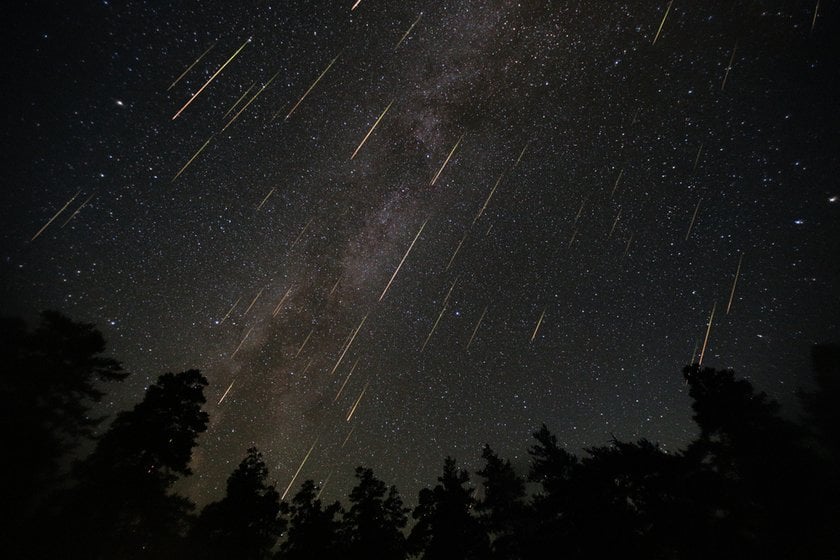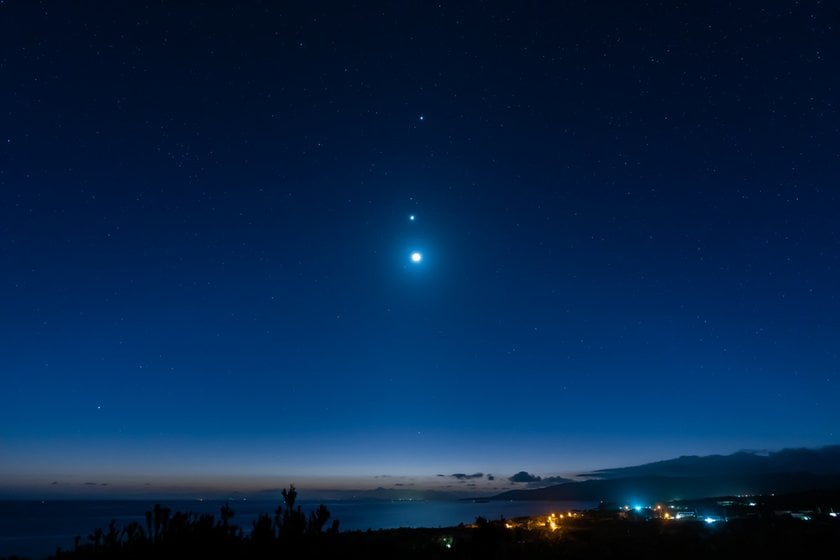Witness The Spectacular Astronomical Events 2026
Last Updated on January 16, 2025

This year promises to be a remarkable journey through the night sky, offering breathtaking opportunities to witness the cosmos in all its splendor and take awesome photos of its phenomena. From meteor showers that paint the heavens with streaks of light to awe-inspiring eclipses that momentarily shroud the sun and moon, 2026's celestial tapestry is set to dazzle and amaze stargazers of all expertise.
Throughout this year, you'll have the chance to observe planetary alignments that create mesmerizing configurations of distant worlds, inviting you to ponder the mysteries of our universe. Whether you're a seasoned astronomer or simply curious about the wonders above, join us as we embark on a celestial adventure. Prepare to mark your calendars and prepare for a year filled with cosmic spectacles that will ignite your imagination and deepen your connection to the cosmos.
A Celestial Tapestry Unfolds: Night Sky Events of 2026
As we gaze to the heavens in 2026, a celestial tapestry of upcoming celestial events unfolds before us. From meteor showers that light up the night to rare planetary alignments that captivate our imaginations, the night sky promises a year of celestial wonders that will leave stargazers and astronomers alike in amazement.
Let's embark on a journey through the key astronomical events that will grace our night skies in 2026!
Meteor Events
Quadrantids (January 3-4):
Start the year with a dazzling display of shooting stars as the Quadrantids meteor shower graces the night sky.
Perseids (August 11-13):
Witness one of the most famous meteor showers, the Perseids, as they paint streaks of light across the August sky.
Solar and Lunar Eclipses
The next lunar event will happen very soon. Get ready to observe and take pictures of the event. Such phenomena are often quite visible, and recording them without special professional equipment is easy. You can easily learn how to take pictures of the moon with an iPhone and use these tips to take good shots of lunar phenomena.
Total Lunar Eclipse (March 25):
One of the upcoming moon events is the Total Lunar Eclipse. A celestial treat awaits as the Earth's shadow blankets the moon, casting it in an eerie red hue during the total lunar eclipse.
Partial Solar Eclipse (April 8):
Witness the captivating celestial display when the sun and moon perform their cosmic dance during a partial solar eclipse, casting a spellbinding spectacle in the skies. North America will be graced with a total solar eclipse, promising a truly awe-inspiring event.
A Ring of Fire (October 2):
Viewers in the Western Hemisphere will witness the second solar eclipse of 2026, an annular eclipse path primarily crossing the Pacific Ocean with limited land visibility. Easter Island's first land sighting occurs at 2:07 p.m. local time (19:07 UTC), providing 6 minutes and 23 seconds of annularity — a moon partially covering the sun, forming a ring of sunlight. It happens due to the moon's greater distance from Earth, making it appear smaller. The eclipse then progresses through southern Chile, the Andes mountains, and Argentina, while southern South America experiences a partial solar eclipse.
Elevate Your Night Skies Photography to Stellar Heights
Discover Luminar NeoPlanetary Alignments
Jupiter and the Moon Dance Together (January 18):
Spot Jupiter near the evening half-moon. Following monthly moon cycles, there are more chances ahead on February 14, March 13, and April 10. Each meeting is unique, with varying moon phases. Use binoculars for a view of Jupiter's four large moons.
Jupiter and Saturn Conjunction (May 2):
Two giant gas planets, Jupiter and Saturn, draw close to each other in a celestial hug, creating a breathtaking sight.
Venus and Mars Conjunction (July 10):
The evening sky hosts a celestial rendezvous as Venus and Mars appear side by side, a sight to be noticed.
Saturn Joins the Moon (September 17):
Witness this stunning sight unaided on October 14, 15, November 11, and December 8. Both bright objects are visible just after sunset, perfect for lower-magnification binoculars. Enjoy the vivid contrast of the moon's silvery glow beside Saturn's unique yellow hue.
Venus and Moon Snuggle (December 4):
The two brightest objects, the moon, and Venus, converge in the early evening. Viewable together through binoculars, Venus mimics a mini quarter-moon via small telescopes. Catch this celestial meeting by spotting the moon just after December 4's sunset.
Space Station Sightings
International Space Station (ISS) Passes:
Watch for the ISS as it orbits the Earth. Witnessing this artificial satellite is a reminder of humanity's presence in space.
Meteor Storms and Comets
Comet 12P/Pons-Brooks (April):
A massive comet, dwarfing Mount Everest, approaches the inner solar system. By April, it may be visible to the naked eye after sunset in the west. Look for it near Jupiter on April 12 for an easier sighting. On April 21, it approaches the sun, potentially shining brightest for prime viewing. During the April 8 solar eclipse, use binoculars or the naked eye to spot it near the eclipsed sun, creating a rare celestial display!
The Eta Aquarids Meteor Shower Peaks (May 4):
For optimal viewing, note May 4's early predawn hours. Dark skies will unveil even the faintest meteors, with the crescent moon rising just before dawn. The radiant point, where meteors appear to originate, lies in the southeast within the Aquarius constellation. To maximize the experience, seek dark, light-free areas and give your eyes 20 minutes to adjust. In the Southern Hemisphere, expect 20 to 30 shooting stars per hour, while the Northern Hemisphere will see 10 to 20 on May 4's morning.
The Arrival of Comet Tsuchinshan-ATLAS (September and October):
Northern Hemisphere observers can start looking for it around October 12. It will become increasingly visible as it climbs into the evening sky each night.
Comet 67P/Churyumov-Gerasimenko (Throughout the Year):
This visitor from the outer reaches of our solar system graces our skies, offering a glimpse into the mysteries of cometary bodies.
Geminid Meteor Shower (December 13-14):
End the year with a celestial crescendo as the Geminid meteor shower lights up the December night sky with its dazzling display.
2026 promises a year of celestial marvels, from the dance of planets to the fiery trails of meteors. Whether you're a seasoned astronomer or a casual skywatcher, these events offer opportunities to connect with the universe and find inspiration in the cosmos. So, mark your calendars and prepare to be enthralled as the celestial tapestry of 2026 unfolds before our eyes, reminding us of the wonders of the universe.
Photo Editing Astronomical Phenomena with Luminar Neo
Photo editing with Luminar Neo opens a world of creative possibilities when capturing astronomical phenomena. Whether you're enhancing images of celestial events or landscapes, the software provides a seamless workflow to make your photos truly shine.
1. Importing Your Image
Begin by importing your astronomy photo into Luminar Neo. The software supports various file formats, making it easy to work with your captures.
2. Basic Enhancements
Luminar Neo offers intuitive tools for basic edits. Adjust exposure, contrast, and color balance to bring out the best in your celestial shots while preserving their natural beauty.
3. Noise Reduction
Noise can be a challenge in low-light astrophotography. Luminar Neo's noise reduction tools help eliminate unwanted graininess and enhance the clarity of stars and celestial objects.
Explore the Future of Noise Reduction with NoiselessAI
Try It in Luminar Neo4. Sky Enhancements
Make the night sky truly pop by enhancing the brightness and contrast of stars, planets, and galaxies. The software allows you to selectively enhance the sky while retaining the details in other parts of the image.
5. Creative Filters
Luminar Neo offers a range of creative filters that can add unique touches to your astronomical photos. Experiment with filters like AI Sky Replacement or Atmosphere AI to create dramatic and captivating celestial scenes. AI Sky Changer is the best option not only for astrological photography but also for any pictures that contain the sky. It can change the story of the photo and give new senses.
6. Export and Share
Once your edits are complete, export your enhanced astronomical image in your desired format and share it with the world to inspire others with the beauty of the cosmos.
Luminar Neo's user-friendly interface and powerful editing tools make it an excellent choice for elevating your astrophotography to new heights, allowing you to capture the majesty of the universe with stunning clarity and creativity.
A 7-day Free Trial of Luminar Neo with No Obligation
GET IT NOW!Bottom Line
Scientists predict upcoming celestial events that every inhabitant can observe in the coming year. The number of these phenomena you can see varies depending on where you live and the ability to travel. Take advantage of the opportunity to see amazing meteors and lunar events. Try to capture them for your collection. If you still miss the planned event, it is not a reason to be upset. After all, you can add elements to your photos or even completely change the sky. If you need to learn how to change the sky in Photoshop, check out the short guide and feel free to experiment with it or Luminar Neo.
In astrophotography, capturing the beauty of celestial events and night sky phenomena requires skill behind the lens and the right tools for post-processing. Luminar Neo proves to be an invaluable asset for photographers seeking to enhance their astronomical images. Its user-friendly interface, powerful editing capabilities, and specialized features simplify transforming your night sky captures into mesmerizing works of art.
From reducing noise in low-light conditions to highlighting the brilliance of stars and celestial objects, Luminar Neo empowers photographers to bring out the hidden wonders of the cosmos. Creative filters and enhancements allow for endless possibilities, letting you craft celestial tapestries that truly stand out.
As you embark on your journey to explore and capture the night sky's celestial wonders in 2026, consider Luminar Neo, your trusty companion. With this innovative photo editing software, you can showcase the universe's grandeur in ways that captivate and inspire viewers, leaving them in awe of the celestial tapestry that unfolds above us every night.







